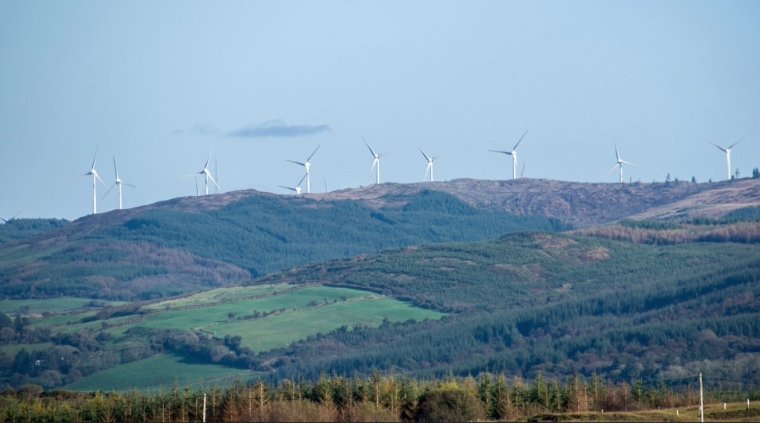
The Climate Change Commission (CCC) says it proposes recommending the Government revisit the design of the incentives created by the New Zealand Emissions Trading Scheme (ETS) to ensure it supports the desired outcomes for the transition to net zero long-lived gas emissions.
The existing ETS architecture, combined with the relatively low cost of using forests to capture carbon, is likely to result in extensive afforestation in the near term, which in turn is likely to slow efforts to reduce emissions at their source. furthermore, and over the long term the ETS will not provide the durable incentives for planting forests needed to reach net zero long lived gas emissions across the economy by 2050.
The ETS is an important part of Government’s strategy to reduce emissions says the CCC. “Putting a price on emissions, which in turn raises the price of emissions-intensive activities and goods, encourages participants to make different choices and innovate to find low emissions alternatives. However, to be effective it needs to be calibrated to achieve the outcomes the Government is seeking. The ETS is a tool, not a strategy in and of itself.”
Beef+Lamb CEO Sam McIvor says that the Climate Change Commission rightly points out that the current policy settings are incentivising over-planting of trees on farmland, and that if this is not fixed, it will undermine New Zealand meeting its emissions reduction targets effectively and also have significant negative consequences for rural communities.
“B+LNZ has said for a long time that there is a place for forestry in meeting New Zealand’s climate change commitments. The integration of trees within farms could be a win-win and go some way towards meeting New Zealand’s climate change objectives, whilst maintaining a vibrant and profitable red meat sector.”
Sam McIvor says the wholesale conversion of productive sheep and beef farms into carbon farms is a significant problem with fossil fuel emitters simply offsetting and not doing enough to use the currently available tools to reduce their emissions in the first place.
“The Climate Change Commission has outlined a range of options for addressing issues relating to offsetting, including introducing gross targets for CO2 as New Zealand currently have for methane, and for meeting New Zealand’s emissions reductions goals. We will be studying these closely.
“Ultimately, the emissions trading scheme needs to be fixed as a matter of urgency. In its latest report, the Climate Change Commission has also identified agriculture as most likely to achieve or even exceed its sub-sector targets in the 2030s, whilst most other sectors, including transport, risk failing to even achieve a fraction of what they need to do,” says McIvor.
“It is good that the Climate Change Commission has also reiterated its support for a farm level system for managing agricultural emissions, however, there is a significant amount of work that needs to be done to set up a credible measurement and reporting system, which would be the first in the world. We strongly recommend focusing on getting this set up and working properly, but not introducing a price until sequestration and mitigation issues have been worked through. This is too important to rush.”
“The Climate Change Commission will also potentially be recommending a review of the methane targets later this year. This is something we will be engaging in closely to ensure that the methane targets are based on the latest science, which shows that New Zealand’s current methane targets disproportionately ask more of methane than CO2 from a climate perspective.”
The CCC says that, the reductions of agriculture emissions will be an important factor in meeting the second emissions budget and the 2030 biogenic methane target. “A broad suite of actions and policies is required to ensure an equitable transition to a low emissions sector. We propose recommending that the Government advance the agricultural emissions pricing system to enable recognition of multiple gross emissions-reducing practices and technologies and drive gross emissions reductions in line with the 2050 target.”
“Farmers will need support to change practices, so we also propose recommending that the Government enhance advisory and extension services to farmers to accelerate the adoption of emissions-efficient practices, appropriate land-use diversification, and emerging technologies to reduce gross emissions. These services should be co-designed and implemented working with industry.”
It's all very well for the CCC to come out and say that the Government should progress with the emissions pricing system for farmers, but we still do not have the mathematical equation that provides a net on farm emission profile. There is significant native vegetation on New Zealand farms absorbing and retaining significant amounts of carbon in real terms that needs to be calculated; if this is not counted then the emission pricing system is completely flawed and inaccurate.
New Zealand farmers are one of the few parts of the economy that have been reducing emissions. The red meat sector has cut its gross emissions by -30% since 1990 alone and has one of the lowest carbon footprints in the world.
Listen to the podcast to hear the full story
Angus Kebbell is the Producer at Tailwind Media. You can contact him here.
6 Comments
The ETS is a life saver for many hill country farms if used correctly. That means planting or using revegetation on land that was clear in 1990. In our case we have used steep land as carbon sinks to finance farm expansion away from erodible land to better land. That means we are not held hostage to the store market and in fact reduce our carbon emissions by selling direct to the local processor.
What we have to acknowledge is that basically we are selling our land without losing possession.
Which means, ultimately, the land on which the off sets sit become worthless ,economically.
The reality is as long as we own those lands we are liable for rates, insurance and any other liability.
I have been involved in hard hill country farming for 4 decades. I am not claiming to know everything.
The thing I see is that this is a way to keep production going for hill farmers. By planting or revegetating and using the ETS to stabilize production costs.
So the remaining workable land will have to carry the holding costs of the land that is now in carbon sequestration mode?
Will that work in the long term?
Thing is Hamish, most land that is to be used for carbon sinks is not suitable for farming long term anyway. Erosion is a major problem and on remote farms the cost of transport is killing the job. Then there are the things such as fertilizer, weed control, fencing etc that are basically unaffordable without off farm income.
Can the land owner escape holding costs of unproductive land by putting it in to QE2 as another option? e.g. would the council still be able to charge rates as if the parcel of land was still owned and had land value/unit area similar to the rest of the farm?
The whole ETS thing feels very shaky to me and being so new, open to meddling by the government of the day.
100% right Hans. Your point on land value needs to be understood but when you look at the opportunity cost, alternative use, for this land is zero in most cases.
Even some recent comments by BandL seem to show they be realising what they maybe losing and I know some senior farming people there who are very concerned about losing carbon income via trees.
I know of 4 land sales to forestry that have fallen over in last 3 weeks. Very distraught farmers who have lost their exit strategy. Land valuers have no idea how to value land destroyed in the storms. Banks are worried.
Be careful what you ask for.
Yet again , more twisting and distortion of what was said .
The climate commission did not say there was too much tree planting , they said there is not enough reduction in carbon emissions, which is pretty obvious to everyone. If we don't plant trees , then we will be buying the carbon credits on the world market, it is a bet either way wether that would be cheaper or more expensive than growing our own. The market idea is that the credits will get more expensive, thereby making it cheaper to reduce emissions than buy credits , regardless of where they come from. But politics got in the way , and there is a cap and auction system on carbon credits. And if the price goes up, it becomes even more profitable to plant exotic trees. They are saying there needs to be an additional tool to force the reduction of carbon emissions.
NZ farmers may have low carbon emissions , but that is not negating the methane issue. I'm sure the govt would be happy to provide carbon credits, if the farm pays full price on the methane levies. But Beef and lamb and others want full credit for carbon , and a 95% discount on Methane payments. Can't have your cake and eat it.

We welcome your comments below. If you are not already registered, please register to comment
Remember we welcome robust, respectful and insightful debate. We don't welcome abusive or defamatory comments and will de-register those repeatedly making such comments. Our current comment policy is here.